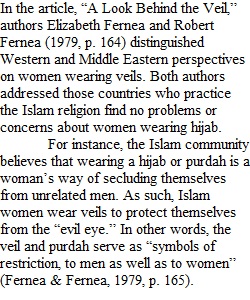


Q 6 papers, 1 dropped, total of 5 papers worth 8 points each During the semester you will be required to write six (6) short papers. Of these 6 papers, the lowest-scoring paper will be dropped. In 2 to 3 typed double-spaced pages (program default fonts no larger than 12pt), you will apply a concept/theory from any of the material for those two weeks to your life outside of class. Material available to use: • Ferrante – Modules 2.1-2.6 • A Look Behind the Veil by Elizabeth W. Fernea and Robert A. Fernea • (Optional) India's Sacred Cow by Marvin Harris • LMS 3, 3 OPTIONAL, and 4 Rubric Application Response Rubric Application Response Rubric Criteria Ratings Pts This criterion is linked to a Learning OutcomeMain Point Summary The summary of the main point(s) from the reading you have chosen 3 to >2.0 pts Full Points The summary is thorough, containing all main point(s) from the chosen reading. 2 to >1.0 pts Partial Points Summary is incomplete, with some main point(s) missing 1 to >0 pts No Points Summary is missing 3 pts This criterion is linked to a Learning OutcomeApplication Example An example from outside of class demonstrating the main point you have chosen 3 to >2.0 pts Full Points The example is clearly stated, with an explanation clearly relating the example to the main point chosen from the summary. 2 to >1.0 pts Partial Points The explanation does not clearly relate the example to the main point chosen from the summary. 1 to >0 pts No Points Example is missing. 3 pts This criterion is linked to a Learning OutcomeCitations 1 pts Full Points Citations are present where needed. Citations are consistent in style. Works Cited page is present and consistent in style. 0.5 pts Partial Points Citations are present in some places but missing in others. Citations are inconsistent in style. OR Citations are consistent in style, present where needed, but Works Cited page is missing. OR Both citations and Works Cited page are inconsistent in style. 0 pts No Points Citations missing. OR Citations and Works Cited Page are missing. 1 pts This criterion is linked to a Learning OutcomeWriting Cleanliness 1 pts Full Points Less than five writing errors found. Work is in correct font, size, margins, and length. 0.75 pts Partial Points - High More than five writing errors found. Type of writing errors minor, such as typos. Work is in correct font, size, margins, and length. 0.5 pts Partial Points - Low More than five writing errors found. Type of writing errors moderate, such as misspelling author names or "there, their, they're" errors. Work doesn't meet length requirements, without other formatting errors. 0 pts No Points Writing errors severe, such as: Incomplete sentences, severe grammar errors, "txt Speak" (u for "you", r for "are", etc.). Work is in an incorrect font, incorrect size, the margins are off or doesn't meet length requirements. 1 pts Total Points: 8 PreviousNext
View Related Questions